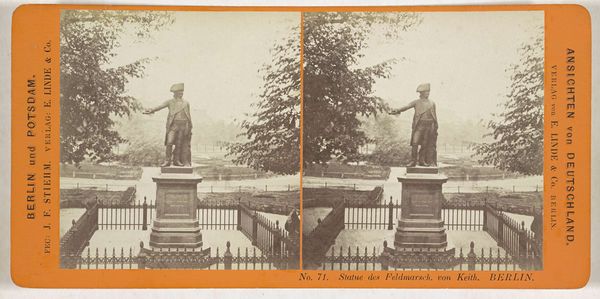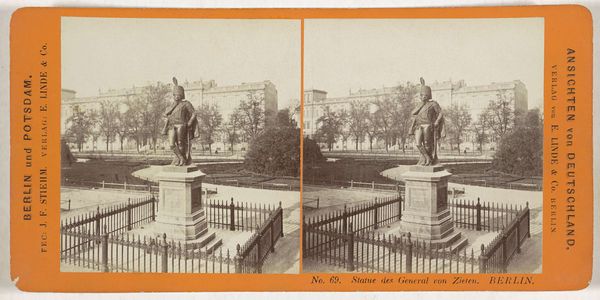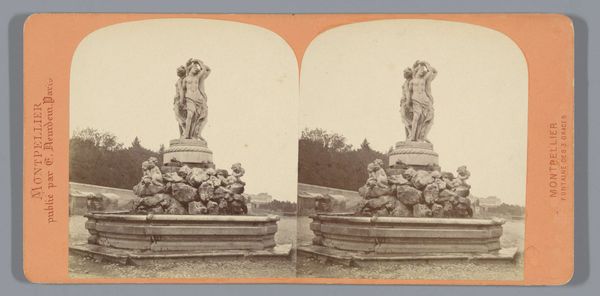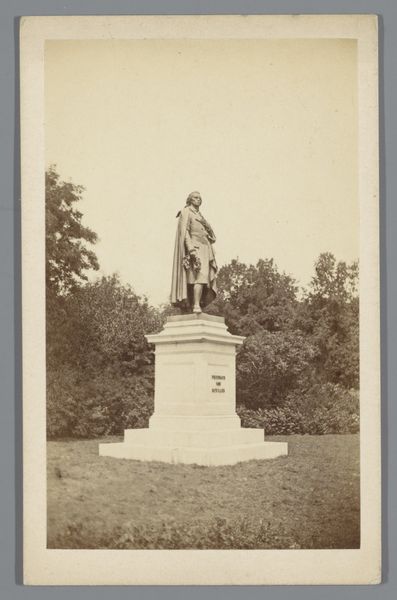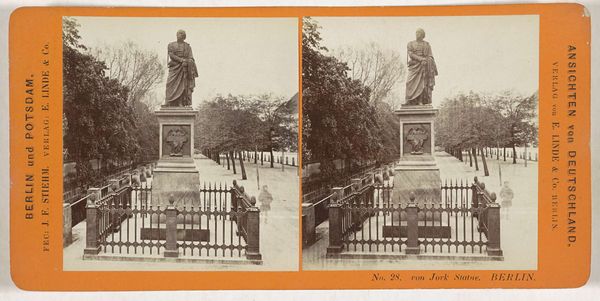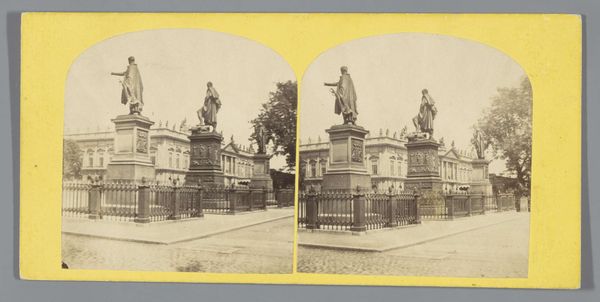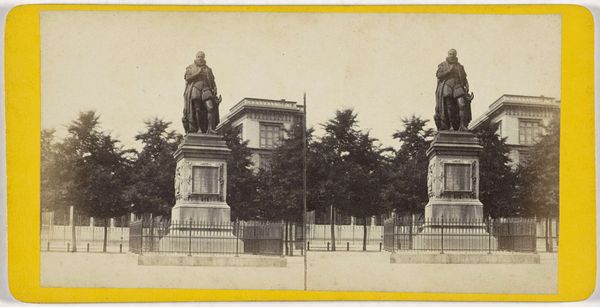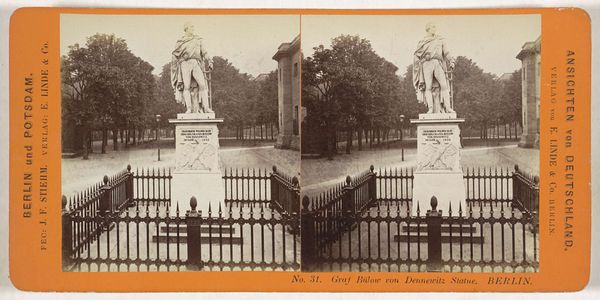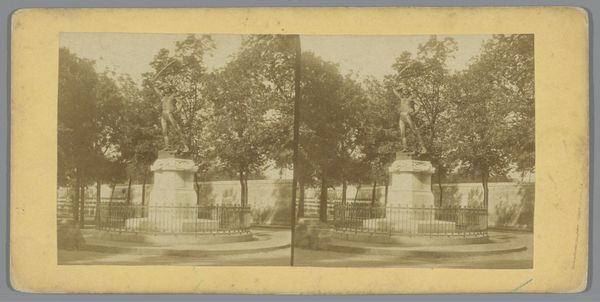
Monument voor Friedrich Schiller op de Maximiliansplatz, München 1868 - 1890
0:00
0:00
Dimensions: height 87 mm, width 178 mm
Copyright: Rijks Museum: Open Domain
Curator: The melancholic tone of this albumen print immediately catches my attention; the way the light renders the textures almost seems to make time palpable. Editor: You're responding, no doubt, to the striking realism the artist Johann Friedrich Stiehm brought to it. We’re looking at a gelatin silver print called "Monument voor Friedrich Schiller op de Maximiliansplatz, München," which translates to "Monument to Friedrich Schiller on Maximiliansplatz, Munich," taken between 1868 and 1890. It depicts the Schiller statue that stands in Munich to this day. Curator: It feels intensely evocative. The figure of Schiller, of course, looms, rendered in such detail. I’m curious, though, about the wreath at the statue’s base. Is that a recurring motif in similar commemorative photography from the period? Editor: Yes, very insightful! Wreaths like that would have served both as literal tributes left by admirers, and symbolic gestures signifying respect and remembrance that reinforced Schiller's cultural status in Germany. His works greatly influenced the German intellectual landscape. Curator: So, this image then becomes a statement on public memory, not simply a recording of a monument. It subtly yet potently captures the ongoing role the artist and artwork continue to play in shaping collective identity. This connects directly to Stiehm's documented history with public commissions for cultural monuments throughout Germany at that time. Editor: And consider the monument’s neoclassical style! Those lines would have carried the weight of Enlightenment ideals – reason, order, and virtue. Schiller, as a playwright and philosopher, embodied many of those principles. Curator: Neoclassicism certainly aimed to link itself to the perceived stability and high-mindedness of the classical world, providing a visual language for national ideals and heroes. Editor: Thinking about this piece, the cultural and emotional impact it could still provoke given the correct viewer, this image underscores how powerful monuments are. Curator: Indeed, and Stiehm's composition here frames Schiller not just as an artist but as a lasting emblem of a particular set of values for German society during a period of great political and cultural transformation.
Comments
No comments
Be the first to comment and join the conversation on the ultimate creative platform.

